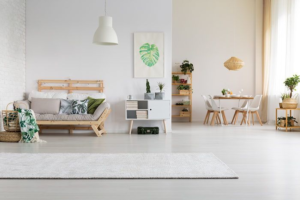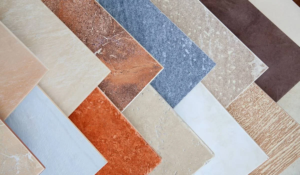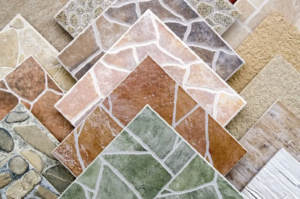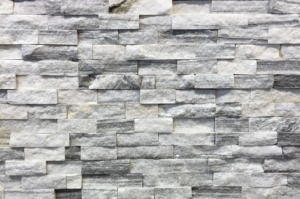Are you considering giving your space a fresh look with new tiles, but finding yourself overwhelmed by the sheer number of options available in the market? Choosing the right tiles for your project can indeed feel like a daunting task, especially when there are numerous factors to consider. But fret not! In this comprehensive guide, we’re here to provide you with all the essential information you need to make informed decisions and embark on your tile transformation journey with confidence.
From understanding different tile materials, finishes, and styles to assessing factors like durability, maintenance, and cost, we’ll cover it all. Whether you’re renovating your kitchen, bathroom, or any other area of your home, we’ll help you navigate through the vast array of choices and find the perfect tiles that suit your taste, budget, and practical needs.
By the end of this guide, you’ll feel empowered to make decisions that not only enhance the aesthetic appeal of your space but also ensure long-lasting functionality. So, let’s dive in and discover how you can breathe new life into your surroundings with the right selection of tiles.
Understanding Your Needs
Before diving into the sea of tile options, it’s crucial to understand your specific requirements. Ask yourself questions like:
1. What is the Purpose of the Space?

Understanding the primary function of the space where the tiles will be installed is crucial for making informed decisions about the type of tiles to choose. Consider the following factors:
- Traffic Flow:
- High-traffic areas like kitchens, bathrooms, entryways, and hallways require durable tiles that can withstand frequent foot traffic without wearing out quickly.
- In these areas, it’s essential to prioritize materials known for their durability and resistance to scratches, stains, and moisture.
- Functional Requirements:
- Determine the specific functional requirements of the space. For example, in a kitchen, you might need tiles that are easy to clean and resistant to stains from spills and splatters.
- In a bathroom, prioritize tiles that can withstand exposure to moisture and humidity without deteriorating or becoming slippery.
- Decorative Considerations:
- In addition to functionality, consider the aesthetic role of the tiles in the space. Are they meant to serve as a practical flooring solution, or are they intended to enhance the visual appeal of the room?
- For decorative spaces like backsplashes, accent walls, or fireplace surrounds, you have more flexibility to explore creative tile options that add personality and style to the room.
- Design Cohesion:
- Ensure that the tile selection complements the overall design theme and style of the space. Whether you’re aiming for a modern, minimalist look or a rustic, traditional vibe, choose tiles that harmonize with the existing decor elements.
- Pay attention to factors such as color, texture, pattern, and size to create a cohesive and visually appealing design scheme.
By identifying the primary purpose of the space and considering factors such as traffic flow, functional requirements, decorative considerations, and design cohesion, you can select tiles that not only meet your practical needs but also enhance the aesthetic appeal of the room.
2. What Aesthetic Are You Going For?

When selecting tiles for your space, it’s essential to consider the overall aesthetic you want to achieve. Your choice of tiles can significantly impact the look and feel of the room, so take into account the following factors:
- Style and Theme:
- Define the style and theme of your space. Are you aiming for a contemporary, minimalist vibe, or do you prefer a more traditional and ornate aesthetic?
- Consider the architectural features, furniture, and decor elements already present in the room, and choose tiles that complement and enhance the existing style.
- Mood and Ambiance:
- Think about the mood and ambiance you want to create in the space. Do you envision a bright and airy atmosphere, or are you drawn to cozy and intimate surroundings?
- The color, texture, and pattern of the tiles can influence the perceived mood of the room, so select options that align with your desired ambiance.
- Color Palette:
- Determine the color palette for the space and choose tiles that harmonize with the existing colors or serve as a focal point.
- Consider factors such as light reflectivity, undertones, and contrast when selecting tile colors to ensure they complement the overall color scheme of the room.
- Texture and Finish:
- Explore different tile textures and finishes to add depth and dimension to the space. Smooth, glossy tiles can create a sleek and contemporary look, while textured or matte tiles lend a more rustic and tactile feel.
- Consider how the tile finish interacts with light and shadows to enhance the visual interest of the room.
- Personal Preference:
- Ultimately, your tile selection should reflect your personal taste and preferences. Choose tiles that resonate with you and contribute to a space that feels authentic and inviting.
- Don’t be afraid to experiment with unconventional tile choices or mix different styles and patterns to create a unique and personalized aesthetic.
By carefully considering the style, mood, color palette, texture, and personal preferences, you can select tiles that not only enhance the visual appeal of your space but also reflect your individuality and create a harmonious and inviting environment.
Exploring Tile Types
Tiles come in various materials, each offering unique features and benefits. Let’s explore some popular options:
3. Ceramic Tiles
Ceramic tiles stand out as a versatile and practical option for both residential and commercial spaces. Renowned for their durability, versatility, and aesthetic appeal, ceramic tiles offer a plethora of benefits that make them a popular choice for various applications. Here’s a closer look at what makes ceramic tiles a go-to option for many homeowners and designers:
- Versatility:
- Ceramic tiles come in an extensive range of colors, patterns, sizes, and finishes, allowing for endless design possibilities. Whether you’re aiming for a sleek, modern look or a classic, timeless aesthetic, there’s a ceramic tile to suit your style.
- They can be used on floors, walls, countertops, backsplashes, and even outdoor areas, making them suitable for virtually any space in your home.
- Durability:
- One of the key advantages of ceramic tiles is their durability. Made from kiln-fired clay and other natural materials, ceramic tiles are resistant to scratches, stains, and moisture, making them ideal for high-traffic areas like kitchens, bathrooms, and entryways.
- With proper installation and maintenance, ceramic tiles can withstand years of use without losing their aesthetic appeal or structural integrity.
- Affordability:
- Ceramic tiles are an affordable flooring and wall covering option, making them accessible to homeowners with various budgets. Compared to natural stone or porcelain tiles, ceramic tiles typically come at a lower price point without compromising on quality or style.
- Their affordability makes ceramic tiles an attractive option for large-scale projects or budget-conscious renovations.
- Low Maintenance:
- Ceramic tiles are easy to clean and maintain, requiring minimal effort to keep them looking fresh and new. Routine sweeping or vacuuming, followed by mopping with a mild detergent solution, is usually sufficient to remove dirt, stains, and spills.
- Unlike natural materials like wood or marble, ceramic tiles do not require sealing or special treatments to maintain their appearance, making them a hassle-free choice for busy households.

Whether you’re renovating your kitchen, bathroom, or living room, ceramic tiles offer a winning combination of style, durability, affordability, and low maintenance. With their versatility and practicality, ceramic tiles continue to be a top choice for homeowners and designers looking to enhance the beauty and functionality of their spaces.
4. Porcelain Tiles
Porcelain tiles stand out as a premium option for homeowners and designers seeking both beauty and functionality in their spaces. Renowned for their exceptional strength, water resistance, and versatility, porcelain tiles offer a range of benefits that make them a popular choice for various applications. Here’s a closer look at what sets porcelain tiles apart:
- Strength and Durability:
- Porcelain tiles are manufactured using high-quality clay and minerals that are fired at extremely high temperatures, resulting in a dense and durable material.
- Their dense composition makes porcelain tiles highly resistant to scratches, chips, and stains, making them an excellent choice for high-traffic areas like kitchens, bathrooms, and entryways.
- Unlike ceramic tiles, which may have a glazed surface, porcelain tiles are typically uniform in color and texture throughout the entire body, ensuring that any chips or wear are less noticeable.
- Water Resistance:
- One of the standout features of porcelain tiles is their exceptional water resistance. Thanks to their low water absorption rate, porcelain tiles are virtually impervious to moisture, making them ideal for areas prone to spills, splashes, and humidity.
- This makes porcelain tiles an excellent option for bathroom floors, shower walls, kitchen backsplashes, and outdoor patios, where moisture resistance is essential to prevent damage and deterioration.
- Versatility in Design:
- Porcelain tiles come in a wide range of designs, including wood and stone looks, offering the beauty of natural materials with added durability and practicality.
- Whether you prefer the warmth and texture of wood or the elegance of marble, there’s a porcelain tile design to suit your aesthetic preferences and design vision.
- Additionally, porcelain tiles can be manufactured with realistic surface textures and patterns that mimic the look and feel of natural materials, providing an authentic and luxurious appearance without the maintenance challenges.
- Easy Maintenance:
- Despite their premium quality and durability, porcelain tiles are surprisingly easy to maintain. Routine sweeping or vacuuming, followed by mopping with a mild detergent solution, is usually all that’s needed to keep porcelain tiles clean and pristine.
- Unlike natural stone tiles, which may require periodic sealing and specialized cleaning products, porcelain tiles retain their beauty and resilience with minimal maintenance, making them a practical choice for busy households.

With their unmatched strength, water resistance, versatility in design, and easy maintenance, porcelain tiles offer a winning combination of beauty and functionality for any space. Whether you’re renovating your kitchen, bathroom, or outdoor patio, porcelain tiles provide enduring style and performance that will stand the test of time.
5. Natural Stone Tiles
Natural stone tiles, such as marble, granite, travertine, and limestone, exude a timeless elegance and luxury that is unmatched by any other material. With their unique veining, colors, and textures, natural stone tiles add character and sophistication to any space. Here’s a closer look at the allure and considerations of natural stone tiles:
- Timeless Elegance:
- Natural stone tiles are prized for their inherent beauty and distinctive characteristics. Each piece of stone is unique, showcasing variations in color, veining, and texture that add depth and interest to the surface.
- Whether you opt for the classic allure of marble, the rugged charm of granite, or the earthy warmth of travertine, natural stone tiles bring a sense of luxury and sophistication to any room.
- Unique Variations:
- One of the standout features of natural stone tiles is their individuality. No two pieces of natural stone are exactly alike, ensuring that your space will have a one-of-a-kind look that reflects the beauty of nature.
- The variations in color, veining, and texture contribute to the richness and complexity of the design, creating a sense of depth and visual interest that cannot be replicated with manufactured materials.
- Maintenance Considerations:
- While natural stone tiles offer unparalleled beauty, they do require regular maintenance to preserve their appearance and integrity.
- Most natural stone tiles are porous and may be prone to staining and etching from acidic substances like wine, citrus juice, and vinegar. As such, it’s essential to seal natural stone tiles regularly to protect them against moisture and stains.
- Additionally, natural stone tiles may be susceptible to scratching and chipping, particularly in high-traffic areas. Careful handling and the use of protective pads or coasters can help minimize the risk of damage.
- Sealing and Care:
- Proper sealing is essential to maintain the beauty and longevity of natural stone tiles. Depending on the type of stone and its usage, sealing may be required every few months to annually.
- Regular cleaning with a pH-neutral stone cleaner and avoiding abrasive cleaning agents or harsh chemicals will help preserve the natural beauty of the stone.
- It’s also important to address spills promptly and avoid placing hot items directly on the surface to prevent potential damage.

While natural stone tiles require more maintenance compared to ceramic or porcelain tiles, their unmatched beauty and timeless appeal make them a worthwhile investment for those seeking to infuse their space with luxury and sophistication. With proper care and maintenance, natural stone tiles will continue to adorn your home with unparalleled elegance for years to come.
Considering Practical Factors
Aside from aesthetics, there are practical considerations to keep in mind when selecting tiles:
6. Durability
When selecting tiles for your space, durability is a crucial factor to consider, as it directly impacts the longevity and performance of your flooring or wall covering. Here are some key points to keep in mind when assessing the durability of tile materials:
- Traffic and Usage:
- Consider the level of foot traffic and usage the tiled area will endure. High-traffic areas such as entryways, kitchens, and hallways require tiles that can withstand frequent use without showing signs of wear and tear.
- Opt for durable materials like porcelain or natural stone in these areas, as they are known for their strength and resilience against heavy foot traffic and impact.
- Environmental Factors:
- Take into account the environmental conditions of the space, including exposure to moisture, humidity, sunlight, and temperature fluctuations. Certain tile materials may perform better than others in specific environments.
- For areas prone to moisture, such as bathrooms, laundry rooms, and outdoor patios, choose tiles with high water resistance, such as porcelain or natural stone treated with a waterproof sealer.
- Resistance to Wear and Damage:
- Evaluate the resistance of tile materials to scratches, stains, chipping, and other forms of damage. Some materials, like ceramic, porcelain, and natural stone, are inherently more durable and resistant to wear and tear compared to others.
- Consider the hardness rating of the tile, measured on the Mohs scale, to gauge its resistance to scratching and abrasion. Porcelain tiles, in particular, often have a high hardness rating, making them highly durable and suitable for high-traffic areas.
- Maintenance Requirements:
- Assess the maintenance requirements of different tile materials and choose ones that align with your lifestyle and maintenance preferences. While some materials may require regular sealing and specialized cleaning products, others may be more low-maintenance.
- Keep in mind that proper maintenance is essential for preserving the durability and appearance of your tiles over time. Regular cleaning and prompt addressing of spills and stains will help extend the lifespan of your tiles.
By prioritizing durability and selecting tiles that can withstand the demands of your lifestyle and environment, you can ensure that your flooring or wall covering remains beautiful and functional for years to come. Whether you opt for porcelain, natural stone, or another durable material, investing in quality tiles will pay off in the long run, providing you with a durable and stylish surface that stands the test of time.
7. Maintenance
Maintaining your tiles is essential for preserving their beauty and ensuring their longevity. Different tile materials have varying maintenance requirements, so it’s important to consider the level of upkeep needed to keep your tiles looking their best. Here are some key factors to consider when evaluating the maintenance needs of tile materials:
- Sealing Requirements:
- Some tile materials, such as natural stone and certain types of ceramic tiles, may require regular sealing to protect against stains, moisture penetration, and other forms of damage.
- Sealants create a protective barrier that helps safeguard the surface of the tiles and make them easier to clean. The frequency of sealing depends on factors such as the type of tile, its location, and the level of wear and tear it experiences.
- Cleaning Methods:
- Consider the ease of cleaning and the cleaning methods required for different tile materials. While some materials are more forgiving and easy to clean with simple household cleaners, others may require specialized cleaning products or techniques.
- Porcelain tiles, for example, are known for their low maintenance and can typically be cleaned with mild detergent and water. Natural stone tiles may require pH-neutral cleaners to prevent damage to the surface.
- Stain Resistance:
- Evaluate the stain resistance of tile materials, especially for areas prone to spills and stains such as kitchens, bathrooms, and dining areas. Materials like porcelain and glazed ceramic tiles are generally more resistant to stains compared to unglazed ceramic or natural stone tiles.
- Proper sealing can also enhance the stain resistance of porous tile materials like natural stone, helping to prevent liquids from penetrating the surface and causing permanent discoloration.
- Wear and Tear:
- Consider the durability of tile materials and their ability to withstand daily wear and tear. Materials like porcelain and natural stone are known for their durability and resilience, making them suitable for high-traffic areas.
- Regular maintenance practices, such as sweeping or vacuuming to remove dirt and debris, and using rugs or mats in high-traffic areas to protect the tiles from excessive wear, can help prolong the lifespan of your tiles.
By considering the maintenance requirements of different tile materials and choosing ones that align with your lifestyle and preferences, you can ensure that your tiles remain in top condition for years to come. Whether you prioritize low maintenance or are willing to invest time and effort into upkeep, selecting the right tiles and implementing proper maintenance practices will help you keep your space looking beautiful and well-maintained.
8. Size and Shape
The size and shape of tiles play a significant role in defining the visual impact and aesthetic appeal of a space. Whether you’re aiming to create a sense of spaciousness, enhance the perception of depth, or add interest with intricate patterns, choosing the right size and shape of tiles is crucial. Here’s a closer look at how tile size and shape can influence the overall look and feel of a space:
- Size:
- Larger tiles can visually expand a space and make it appear larger and more open. This is particularly effective in small rooms or areas where you want to create an illusion of spaciousness.
- Large-format tiles, such as 12×24 inches or 24×24 inches, are popular choices for floor and wall applications, as they minimize grout lines and create a seamless, modern look.
- In addition to their aesthetic benefits, larger tiles are also easier to clean and maintain, as there are fewer grout lines for dirt and grime to accumulate.
- Shape:
- The shape of tiles can add personality and visual interest to a space, whether through geometric patterns, arabesque motifs, or traditional designs.
- Rectangular tiles, such as subway tiles or plank tiles, are versatile options that can be laid in various patterns, including brick bond, herringbone, or staggered layouts. They are ideal for creating classic, timeless looks or contemporary designs with a twist.
- Square tiles offer a classic and symmetrical appearance and are well-suited for creating uniform patterns or grid layouts. They are commonly used in traditional and modern settings alike.
- Specialty shapes, such as hexagon, octagon, or arabesque tiles, add a unique and artistic flair to a space. These shapes are perfect for creating focal points, accent walls, or decorative borders that showcase creativity and individuality.
- Design Flexibility:
- Smaller tiles are ideal for intricate designs, intricate patterns, and mosaic compositions. They offer greater design flexibility and can be used to create detailed motifs, borders, or accents that add visual interest to a space.
- Mix and match different sizes and shapes of tiles to create dynamic and visually appealing layouts. Combine large-format tiles with smaller accent tiles or decorative inserts to add texture, contrast, and depth to your design.
By carefully considering the size and shape of tiles, you can enhance the visual impact and functionality of your space. Whether you opt for larger tiles to create a sense of spaciousness or smaller tiles for intricate designs, choosing the right size and shape will help you achieve your desired aesthetic and transform your space into a stunning reflection of your style and personality.
Making an Informed Decision
Armed with the knowledge of your needs and the various tile options available, it’s time to make a decision. Here are some final tips to help you along the way:
9. Samples are Your Best Friend
Samples are an invaluable tool when it comes to selecting the perfect tiles for your space. While browsing tiles online or in-store can provide a general idea of their appearance, nothing beats seeing and touching the actual samples in your own space. Here’s why samples are your best friend in the tile selection process:
- Visual Assessment:
- Samples allow you to assess the color, texture, and pattern of the tiles up close and in person. Seeing the tiles in natural daylight and under artificial lighting conditions in your space gives you a more accurate representation of how they will look once installed.
- Different lighting conditions can significantly affect the appearance of tiles, so it’s essential to view them in various lighting scenarios to ensure they meet your expectations.
- Texture and Finish:
- By examining samples, you can feel the texture and finish of the tiles firsthand. Whether you’re drawn to smooth, glossy surfaces or textured, matte finishes, samples help you determine which options best suit your preferences and design vision.
- Texture and finish can impact both the aesthetic and practical aspects of the tiles, such as slip resistance, ease of cleaning, and overall tactile feel.
- Compatibility with Existing Decor:
- Samples allow you to assess how the tiles coordinate with existing elements in your space, such as cabinetry, countertops, paint colors, and furnishings. This ensures that the tiles complement the overall design scheme and enhance the visual harmony of the room.
- Comparing tile samples against existing materials and finishes helps you make informed decisions and avoid potential clashes or mismatches in color or style.
- Decision Making:
- With samples in hand, you can compare different tile options side by side and evaluate their relative merits. This facilitates the decision-making process and gives you confidence in your final choice.
- Seeing the tiles in your space also helps you envision how they will contribute to the overall look and feel of the room, allowing you to make adjustments or refinements as needed.
When requesting samples, be sure to consider factors such as tile size, color variation, and grout color to ensure they accurately represent the final outcome. Most tile suppliers offer sample programs or can provide small sample pieces upon request. Take advantage of these resources to make informed decisions and transform your space with confidence.
10. Consult with Experts
When embarking on a tile selection journey, consulting with experts such as tile professionals or interior designers can prove to be invaluable. These individuals possess a wealth of knowledge and experience that can help you navigate the vast array of tile options and make informed decisions. Here’s why consulting with experts is essential:
- Expertise and Experience:
- Tile professionals and interior designers have in-depth knowledge of different tile materials, finishes, installation techniques, and design trends. They can offer valuable insights and recommendations based on their expertise and experience in the industry.
- By tapping into their knowledge, you can gain a better understanding of the pros and cons of various tile options and how they align with your specific project requirements and design goals.
- Personalized Guidance:
- Experts can provide personalized guidance tailored to your unique needs, preferences, and budget. Whether you’re renovating a kitchen, bathroom, or any other space, they can help you identify the most suitable tile options that meet your aesthetic and functional requirements.
- They can also assist you in selecting complementary materials, coordinating colors and patterns, and creating cohesive design schemes that enhance the overall look and feel of your space.
- Problem Solving:
- In the event of challenges or obstacles during the tile selection process, experts can offer creative solutions and problem-solving strategies. Whether it’s addressing technical concerns, optimizing layout and installation efficiency, or overcoming design dilemmas, their expertise can help streamline the decision-making process and mitigate potential issues.
- Access to Resources:
- Tile professionals and interior designers often have access to a wide network of suppliers, manufacturers, and industry resources. They can recommend reputable suppliers, source specialty materials, and negotiate pricing on your behalf, saving you time and effort in the procurement process.
- Additionally, they may have access to showroom displays, sample libraries, and design tools that allow you to visualize different tile options and design concepts before making final decisions.
Consulting with experts not only provides you with access to valuable knowledge and resources but also gives you peace of mind knowing that you’re making well-informed choices for your project. Whether you’re a novice renovator or an experienced homeowner, seeking advice from tile professionals or interior designers can help you achieve the desired results and transform your space with confidence.
Conclusion
Choosing the ideal tiles for your project is a nuanced process that involves a combination of factors, ranging from personal taste to practical considerations. As you navigate through the myriad of options available, it’s crucial to approach the selection process with careful consideration and attention to detail. By following these key steps and principles, you can confidently select tiles that not only enhance the aesthetic appeal of your space but also meet your practical needs and preferences:
- Understanding Tile Types:
- Familiarize yourself with the different types of tiles available, including ceramic, porcelain, natural stone, and more. Each type offers unique characteristics and benefits, so it’s essential to choose one that aligns with your specific project requirements.
- Considering Practical Factors:
- Take into account practical considerations such as durability, maintenance requirements, and suitability for the intended use and environment. Factors like traffic flow, moisture exposure, and ease of cleaning should influence your tile selection process.
- Seeking Expert Advice:
- Don’t hesitate to seek advice from tile professionals, interior designers, or other experts in the field. Their expertise and insights can provide valuable guidance throughout the decision-making process and help you navigate any challenges or uncertainties that arise.
- Personalizing Your Space:
- Ultimately, selecting tiles is an opportunity to infuse your personal style and creativity into your space. Consider factors such as color, texture, pattern, and shape to create a design scheme that reflects your personality and enhances the ambiance of your home.
By carefully considering these factors and taking a thoughtful approach to your tile selection process, you can transform your space with confidence and create a lasting impact. Whether you’re renovating a kitchen, bathroom, or any other area of your home, let your creativity shine as you embark on your tile journey. With the right tiles chosen thoughtfully and installed with care, you can achieve a beautiful and functional space that brings joy and satisfaction for years to come. So, embrace the possibilities, trust your instincts, and enjoy the process of bringing your vision to life through the transformative power of tiles!
